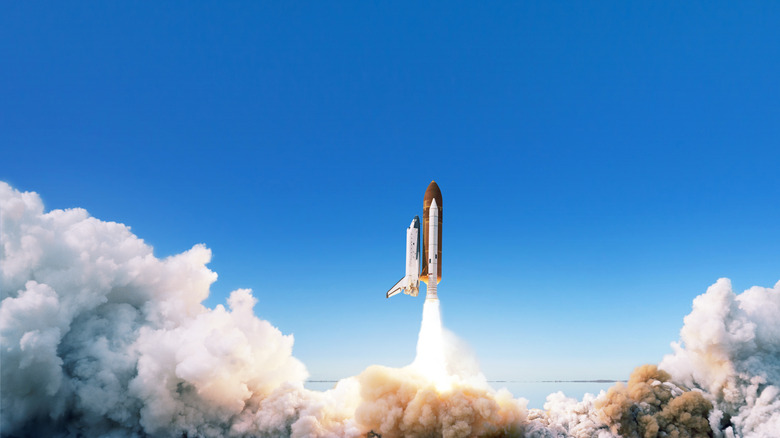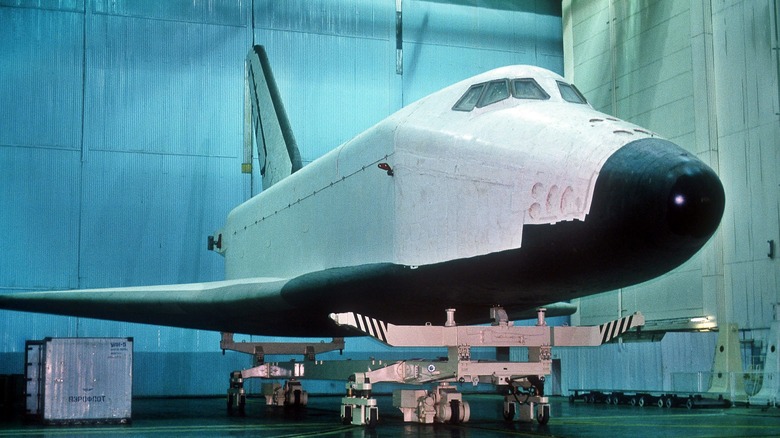The Truth Behind The Time Russia Tried To Steal The Space Shuttle
Early into the Cold War, the Soviet Union seemed to be at the cutting edge of space exploration, making them a source of extreme paranoia for the United States. By 1981, however, clear Soviet dominance beyond Earth was long gone after the previous decade's Apollo missions and the first launch of the Space Shuttle. Soviet officials deeply desired a Soviet answer to the latter development in order to affect the appearance of technological parity — both for international optics and to address internal fears that the American craft could be used as a nuclear dive bomber (via The Space Review).
According to Infographics, several ingenious designs were proposed but all were dismissed as they did not meet the capabilities or aesthetic of the Space Shuttle. Instead, the Russians chose to use their spy network to examine data from several American institutions that contributed to the shuttle program, gathering enough information to start their own program. Despite the blatant use of American resources, the result of this Soviet effort was not only a success but in many ways superior to the original.
The Buran was more than a copy of the Space Shuttle
Despite the Reagan administration's efforts to classify previously public documents and mislead spies, Soviet engineers were able to fill in the gaps by 1988. Completely unmanned due to unfinished life-support systems, the Buran craft launched for its first and only mission, orbiting the Earth twice before landing in Kazakhstan (via HistoryNet). For most people, this was the height of its success, a single unmanned launch before the Soviet Union dropped it as an expensive and militarily useless vehicle (via CNN).
According to the YouTube channel Mustard, this might have been a gravely missed opportunity in the years ahead. In order to get to space, the American shuttle used its own integrated rockets fed by an external fuel tank and two solid-fuel boosters. The Buran lacked any and was instead lifted entirely by an independent liquid-fuel rocket system, and had accommodations for both crew ejection and unmanned flight as previously mentioned (via Buran-Energia). When compared to the Space Shuttle it wasn't just a replica but in theory an overall safer craft. That being said, the American shuttle faced a similar fate for similar reasons and more in 2011, making the comparison somewhat moot (via Astronomy.com).

